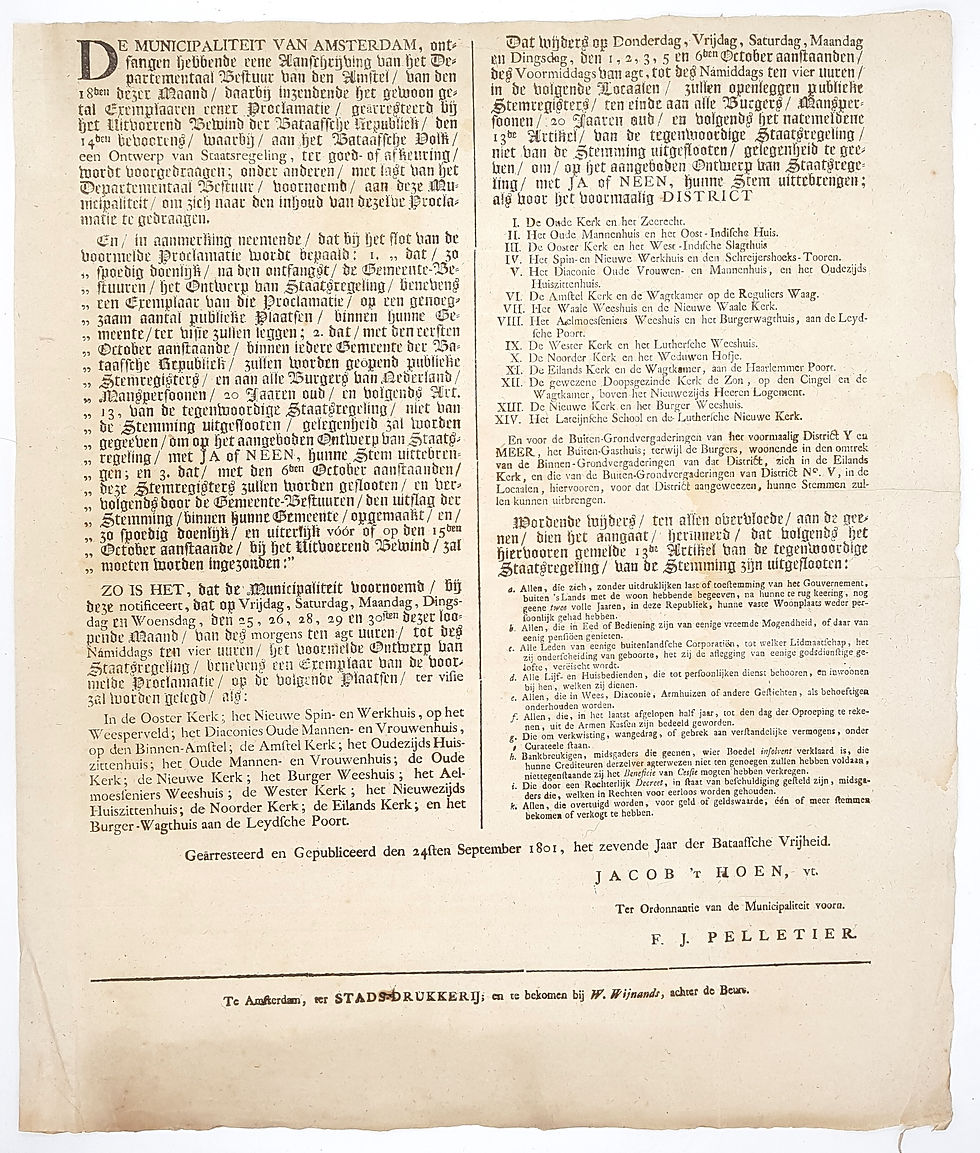A very rare religious tract prompted by the Great Comet of 1811, which was visible to the naked eye for nine months, a record that would not be broken until the Hale–Bopp comet of 1997.
“Numerous astronomers have declared this comet among the most impressive in history, with its naked-eye visibility beginning in mid-April 1811 and lasting until the first week of January 1812. In addition, observers with telescopes followed it for 511 days, which more than doubled the record of 201 days set by the Great Comet of 1807” (Kronk).
And, as Kronk observes, the comet also had a significant cultural impact outside of the astronomical community. Napoleon I saw the comet’s appearance as a good omen for his 1812 Russian campaign, and “the year 1811 saw the appearance of several particularly good vintages of wine”.
In the present tract, a dialogue, a parishioner fears the comet because he thinks it is ominous. The minister advises him to fear God rather than comets: “Then when Comets shall blaze, when the elements shall melt with fervent heat, and the earth and the works that are therein shall be burnt up you will have a building of God, an[!] house not made with hands, eternal in the heavens”. The tract closes with a “Friendly Advice” to the reader to “believe in the Lord Jesus Christ” and “be saved”.
Lincoln and Edmands was an important early-19th-century Boston publishing house of religious (particularly baptist) tracts.
WorldCat lists copies at the American Antiquarian Society and the Lilly Library. Apparently both have a press variant, with page 12 misnumbered “21”, an error that has been corrected in the present copy.
A religious tract on the Great Comet of 1811, printed in Boston
[Caption title:] Series of Evangelical Tracts, no. 30. The comet explained and improved in a conversation between a minister and one of his parishioners.
Boston, Lincoln and Edmands, 1812.




![Ordinaris staat van oorlogh over de laaste 9: maanden d'Anno 1752 [The Netherlands], [1752].](https://static.wixstatic.com/media/3b7891_3de4fd38d88f4ea1857a3ddfe41b390a~mv2.jpg/v1/fill/w_980,h_1273,al_c,q_85,usm_0.66_1.00_0.01,enc_avif,quality_auto/3b7891_3de4fd38d88f4ea1857a3ddfe41b390a~mv2.jpg)
![Ordinaris staat van oorlogh over de laaste 9: maanden d'Anno 1752 [The Netherlands], [1752].](https://static.wixstatic.com/media/3b7891_8e2158539f5049f292cffb774ba84a36~mv2.jpg/v1/fill/w_980,h_1307,al_c,q_85,usm_0.66_1.00_0.01,enc_avif,quality_auto/3b7891_8e2158539f5049f292cffb774ba84a36~mv2.jpg)




![Ludwig & Rosettchen. Eine Wundersame Historie. Gedruckt in dies Jahr. [Berlin], [1895-1896].](https://static.wixstatic.com/media/3b7891_c493b474f575433ca9fb47c39ab7cfba~mv2.jpg/v1/fill/w_980,h_1243,al_c,q_85,usm_0.66_1.00_0.01,enc_avif,quality_auto/3b7891_c493b474f575433ca9fb47c39ab7cfba~mv2.jpg)
![Ludwig & Rosettchen. Eine Wundersame Historie. Gedruckt in dies Jahr. [Berlin], [1895-1896].](https://static.wixstatic.com/media/3b7891_670c9488ba3142638c8a661abc55292d~mv2.jpg/v1/fill/w_980,h_1249,al_c,q_85,usm_0.66_1.00_0.01,enc_avif,quality_auto/3b7891_670c9488ba3142638c8a661abc55292d~mv2.jpg)
![Amsterdam den 10 January 1766 / Aamspraak[!] van den hooftofficier Isaak Sweers / Aan Johan Humbert synde gerabraakt. [Amste](https://static.wixstatic.com/media/3b7891_6f0fb5c10b4a491b99f4b5131fe76f34~mv2.jpg/v1/fill/w_980,h_1525,al_c,q_85,usm_0.66_1.00_0.01,enc_avif,quality_auto/3b7891_6f0fb5c10b4a491b99f4b5131fe76f34~mv2.jpg)
![Amsterdam den 10 January 1766 / Aamspraak[!] van den hooftofficier Isaak Sweers / Aan Johan Humbert synde gerabraakt. [Amste](https://static.wixstatic.com/media/3b7891_54a560ed64414b4eaf413a47317b0199~mv2.jpg/v1/fill/w_980,h_1551,al_c,q_85,usm_0.66_1.00_0.01,enc_avif,quality_auto/3b7891_54a560ed64414b4eaf413a47317b0199~mv2.jpg)


![Simcha van Frank. Mensen achter ramen. Herinneringen. Hadera, [Self Published], 1994.](https://static.wixstatic.com/media/3b7891_05720e3e77b34996a7c7d40475480a3b~mv2.jpg/v1/fill/w_980,h_1202,al_c,q_85,usm_0.66_1.00_0.01,enc_avif,quality_auto/3b7891_05720e3e77b34996a7c7d40475480a3b~mv2.jpg)
![Simcha van Frank. Mensen achter ramen. Herinneringen. Hadera, [Self Published], 1994.](https://static.wixstatic.com/media/3b7891_819c28f64d6a42b4a01fb6e7f0630f5e~mv2.jpg/v1/fill/w_980,h_1324,al_c,q_85,usm_0.66_1.00_0.01,enc_avif,quality_auto/3b7891_819c28f64d6a42b4a01fb6e7f0630f5e~mv2.jpg)


![The black album. Series 1. Tel Aviv, The Anti-Nazi League (printed by the Arieli Press), [Arpil? 1940].](https://static.wixstatic.com/media/3b7891_863d81886ac8445c8bc893d407822e95~mv2.jpg/v1/fill/w_980,h_1345,al_c,q_85,usm_0.66_1.00_0.01,enc_avif,quality_auto/3b7891_863d81886ac8445c8bc893d407822e95~mv2.jpg)
![The black album. Series 1. Tel Aviv, The Anti-Nazi League (printed by the Arieli Press), [Arpil? 1940].](https://static.wixstatic.com/media/3b7891_ccfaac8b87324d7caa27b0958fa8eecd~mv2.jpg/v1/fill/w_980,h_641,al_c,q_85,usm_0.66_1.00_0.01,enc_avif,quality_auto/3b7891_ccfaac8b87324d7caa27b0958fa8eecd~mv2.jpg)









